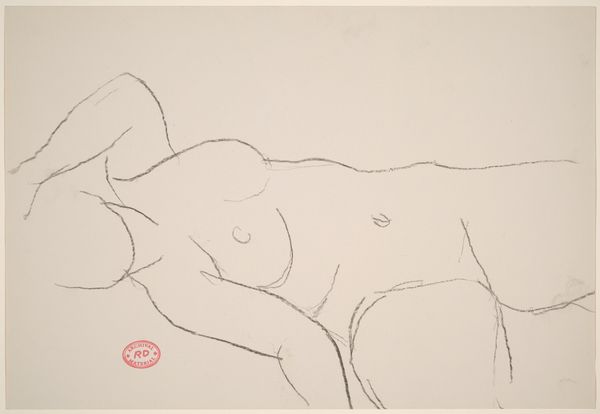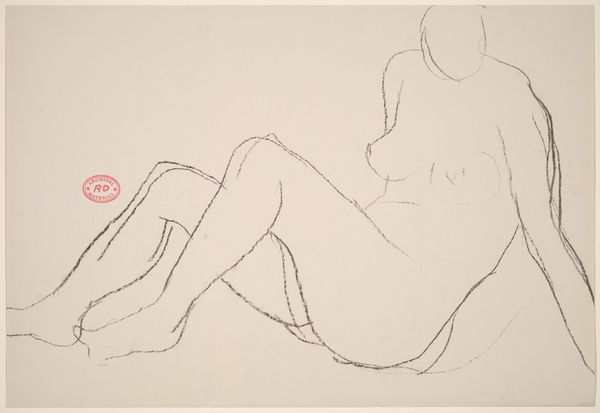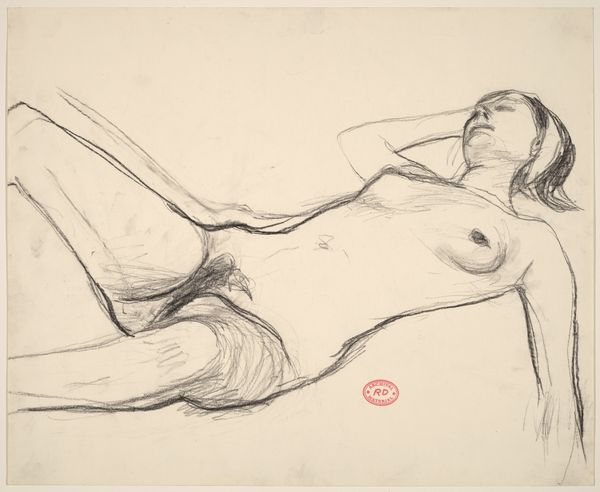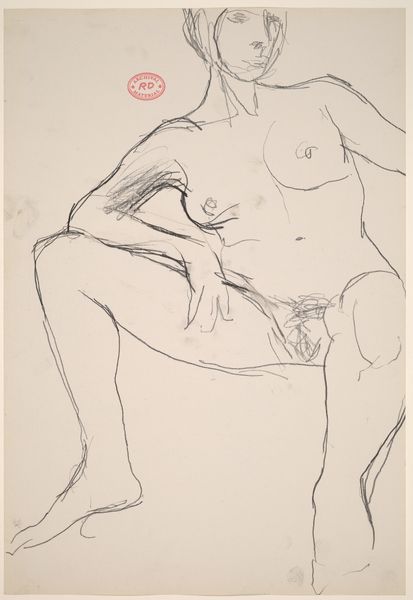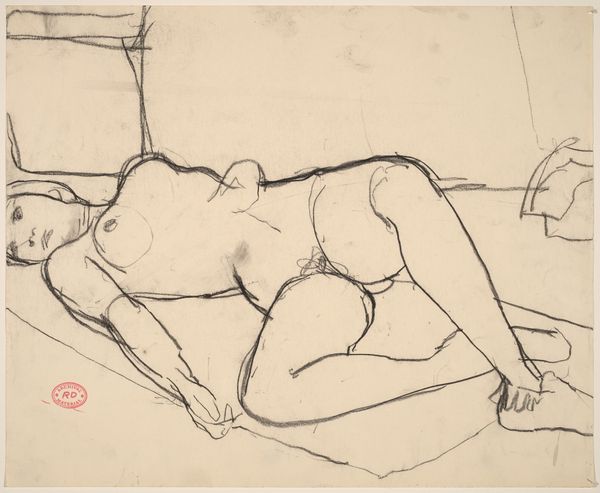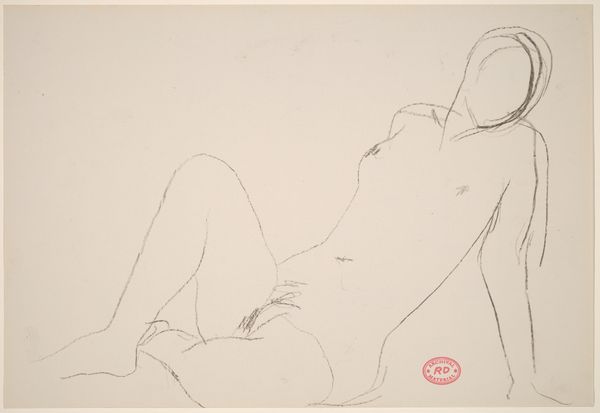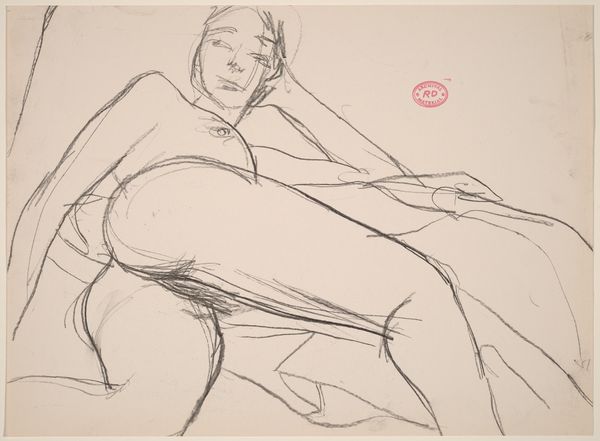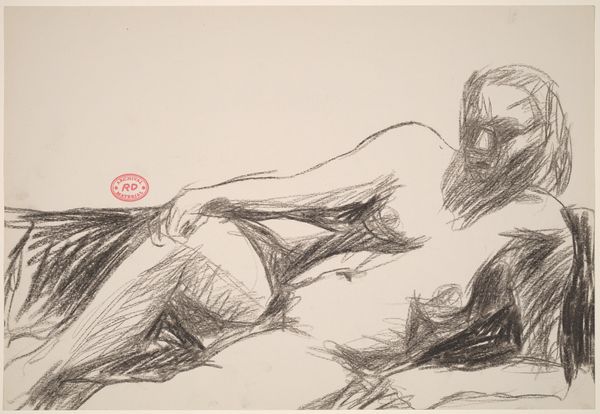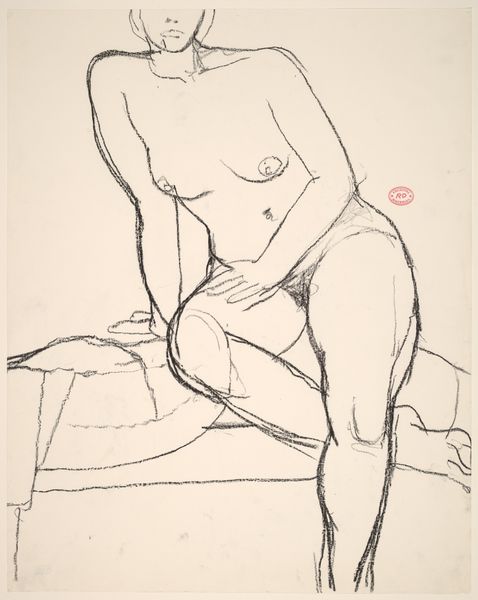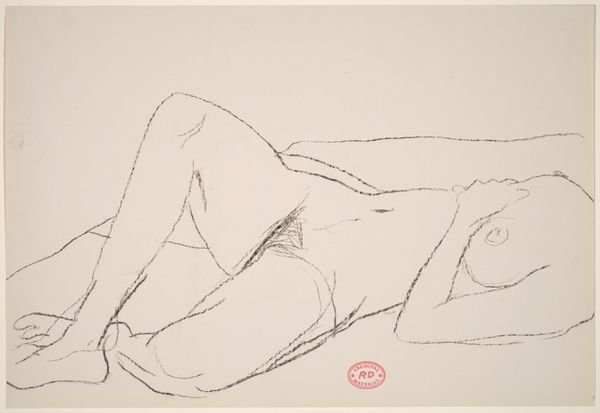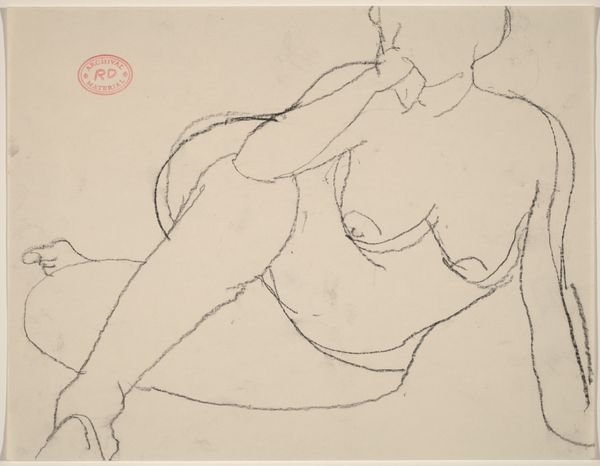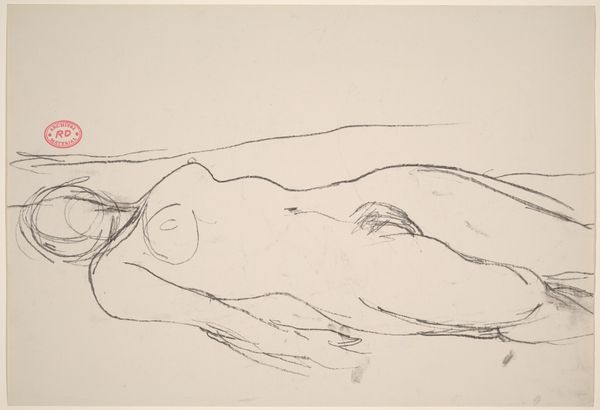![Untitled [seated female nude with right hand touching hair] by Richard Diebenkorn](/_next/image?url=https%3A%2F%2Fd2w8kbdekdi1gv.cloudfront.net%2FeyJidWNrZXQiOiAiYXJ0ZXJhLWltYWdlcy1idWNrZXQiLCAia2V5IjogImFydHdvcmtzLzMzM2RjYmNiLTk5MjYtNGYwZC05MzZlLTlmMTQ0MzVkYTU2Yy8zMzNkY2JjYi05OTI2LTRmMGQtOTM2ZS05ZjE0NDM1ZGE1NmNfZnVsbC5qcGciLCAiZWRpdHMiOiB7InJlc2l6ZSI6IHsid2lkdGgiOiAxOTIwLCAiaGVpZ2h0IjogMTkyMCwgImZpdCI6ICJpbnNpZGUifX19&w=3840&q=75)
Untitled [seated female nude with right hand touching hair] 1955 - 1967
0:00
0:00
drawing, pencil
#
portrait
#
drawing
#
ink drawing
#
bay-area-figurative-movement
#
pencil
#
portrait drawing
#
nude
Dimensions: overall: 31.8 x 43.2 cm (12 1/2 x 17 in.)
Copyright: National Gallery of Art: CC0 1.0
Curator: There's a certain contemplative mood that emanates from this simple, stark nude drawing. The figure's pose suggests inward reflection, almost melancholy. Editor: Indeed. We are looking at "Untitled [seated female nude with right hand touching hair]" created by Richard Diebenkorn sometime between 1955 and 1967. The work consists of delicate pencil and ink lines that define the form of a woman, seated. Curator: The loose lines have such incredible emotive quality. Diebenkorn is well known for representing female figures throughout his work, which I suppose reflects the cultural positioning of women as artistic objects. How much is this the depiction of the personal inner life of a woman, or of a type of ideal woman? Editor: Interesting point! Perhaps the positioning is not of the figure, but more broadly reflective of postwar America—the aesthetic shifts occurring in the late 50's, for example. The sparseness might even reflect a social and spiritual anxiety that would soon pervade the counterculture movement in the following decade. But also, the way the woman is drawn with these soft curves, this references images of Venus or other such goddesses of fertility in Western art tradition. This isn’t just *any* woman, there’s almost a mythological significance to the composition. Curator: That's an intriguing lens to apply to this work. Thinking about its historical context is fascinating, considering he was working during a period where Abstract Expressionism was giving way to Pop Art and other representational movements. I wonder how he viewed himself in this transition, his place in representing women amongst this significant socio-cultural change. Editor: Ultimately, I see the drawing inviting viewers to project their feelings. Its apparent incompleteness seems intentional, prompting personal meaning in its observers, don't you agree? Curator: I am left with a quiet pondering about the art-historical value that lies not only in the final work itself, but in the aesthetic and sociocultural context of a fleeting moment of inspiration and emotion. Editor: I agree! These ephemeral pieces reveal something vital. Visual symbols have power, cultural power. I really appreciate these sketches' quiet, resilient life.
Comments
No comments
Be the first to comment and join the conversation on the ultimate creative platform.
